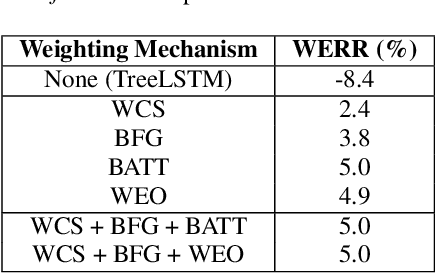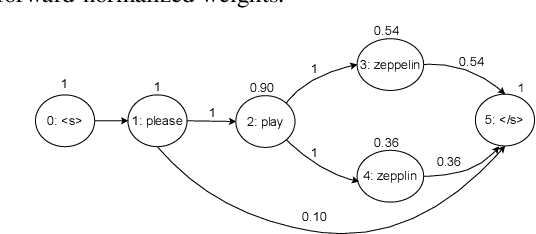Volker Leutnant
Promptformer: Prompted Conformer Transducer for ASR
Jan 14, 2024



Abstract:Context cues carry information which can improve multi-turn interactions in automatic speech recognition (ASR) systems. In this paper, we introduce a novel mechanism inspired by hyper-prompting to fuse textual context with acoustic representations in the attention mechanism. Results on a test set with multi-turn interactions show that our method achieves 5.9% relative word error rate reduction (rWERR) over a strong baseline. We show that our method does not degrade in the absence of context and leads to improvements even if the model is trained without context. We further show that leveraging a pre-trained sentence-piece model for context embedding generation can outperform an external BERT model.
Lattention: Lattice-attention in ASR rescoring
Nov 19, 2021



Abstract:Lattices form a compact representation of multiple hypotheses generated from an automatic speech recognition system and have been shown to improve performance of downstream tasks like spoken language understanding and speech translation, compared to using one-best hypothesis. In this work, we look into the effectiveness of lattice cues for rescoring n-best lists in second-pass. We encode lattices with a recurrent network and train an attention encoder-decoder model for n-best rescoring. The rescoring model with attention to lattices achieves 4-5% relative word error rate reduction over first-pass and 6-8% with attention to both lattices and acoustic features. We show that rescoring models with attention to lattices outperform models with attention to n-best hypotheses. We also study different ways to incorporate lattice weights in the lattice encoder and demonstrate their importance for n-best rescoring.
 Add to Chrome
Add to Chrome Add to Firefox
Add to Firefox Add to Edge
Add to Edge